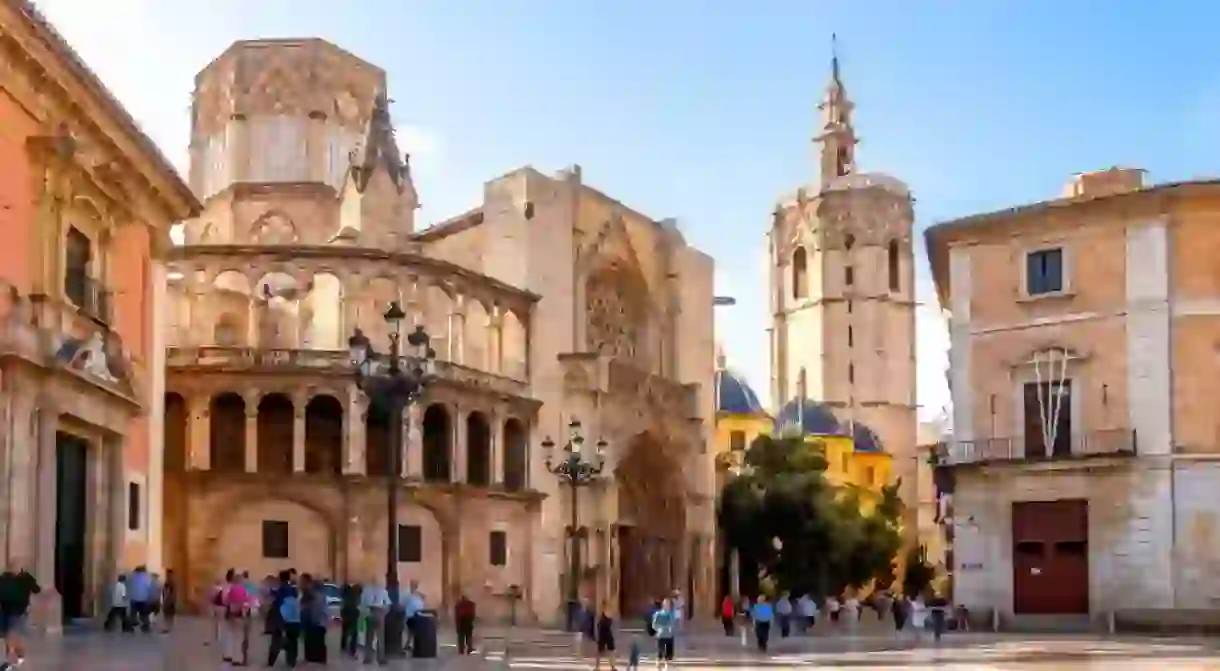10 Reasons Why You Should Visit Valencia, Spain

From the golden sands of Playa Las Arenas and the flamboyant Rococo architecture of the Palace of the Marqués de Dos Aguas, to the cobbled, maze-like Old Town, Valencia has a lot to offer.
Though it’s often overlooked in favour of Barcelona or Madrid, Valencia has plenty going for it. Located on Spain’s east coast, the 2,000-year-old city boasts wide sandy beaches, striking architecture, a buzzing food scene and culture, without the crowds found in other large Spanish cities. It’s the third-largest city in Spain, but the main attractions – including the cathedral, the Mercado Central and the Unesco-listed Lonja de la Seda – are walkable around the town centre. Here are the top reasons why Valencia should be on your radar.
It’s (almost) always beach weather
Natural Feature

With 12mi (20km) of long, sandy beaches and more than 300 sunny days each year, you can stretch out a towel and soak up the rays year-round in Valencia. Closest to the Old Town and just minutes away by bus are the urban beaches of Las Arenas, La Malvarrosa and La Patacona, stretching for 4km (2.5mi) along the seafront. After a lazy afternoon of sunbathing, stroll down the palm tree-lined promenade, Paseo Marítimo, and slip into one of the buzzing bars to enjoy sundown with a crisp glass of vino in hand.
To discover its diverse architecture
Building, Historical Landmark, Memorial, Market

Valencia’s Old Town is the perfect size to walk around
Historical Landmark
Valencia’s main monuments, including the cathedral, El Miguelete bell tower, La Lonja and the Mercado Central, are all within walking distance in Valencia’s compact Old Town. Wandering through the warren of narrow alleys, you’ll be struck by the abundance of vibrant street art that sits in contrast with the grand old buildings and cobbled streets. When you need a break, grab an outdoor table and soak up the local atmosphere in the Plaza de la Virgen.
Paella originated in Valencia
Restaurant, Spanish, Mediterranean

Valencia is the birthplace of paella, which makes it perfect for a foodie pilgrimage. For authentic paella valenciana – made with chicken or rabbit, white beans and snails – visit La Pepica, a Valencian institution by the beach, once frequented by Ernest Hemingway. Paella aside, the city’s dining scene revolves around spectacular seafood and tapas, which you can tuck into at the modernist Mercado Central. Stop at La Huertana, a quaint cafe that serves up Valencia’s other signature dish: horchata (a traditional tipple made from tiger nuts) and fartons (sugary sponge fingers – try not to giggle when you’re ordering them).
Valencia has some bizarre annual festivals
Natural Feature

Valencians love to party. The city is best known for Las Fallas, a wild, five-day festival in March when giant papier-mâché puppets are paraded through the streets and then set on fire. You can also soak up the party atmosphere if you visit during Carnival in February as the city comes alive with street parties, firework displays and parades. Music fans should come for the two-day Festival de les Arts, which includes a line-up of national and international musicians, modern art and creative gastronomy.
It has unique cultural traditions
Architectural Landmark
Valencia, one of Spain’s autonomous communities, isn’t a typical Spanish city. It has its own language (a dialect of Catalan) and unique cuisine, with a focus on rice, seafood and meat, plus a host of fascinating cultural traditions. During festival season, you can spot locals donning bright, patterned silk costumes that cost thousands. For authentic souvenirs, pick up a hand-painted silk fan in the Ruzafa district, paella rice from the Mercado Central or some colourful ceramic tiles from Plaza Redonda.
Valencia has several green lungs
Park

The museums are free
Museum
Valencia is cycle-friendly
Building, Cinema, Museum, Opera House, Aquarium, Concert Hall, Architectural Landmark
The nightlife is banging
Cafe, Pub, European

Valencia’s nightlife is young and lively thanks to its sizeable student population. Head out to bar hop in the Old Town, starting off at Café de las Horas for a jug of agua de Valencia (a potent mix of cava, orange juice, gin and vodka) before ambling to the bars in El Carmen such as Café Negrito. For a less touristy scene, visit Ruzafa, where you’ll find sleek cocktail bars and cafés. And to dance the night away, there’s Radio City, Mya Club or Black Note Club.
This is an updated rewrite of an article originally by Clare Speak.













